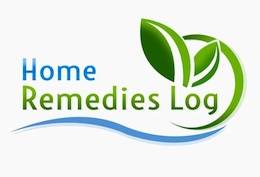
Echniacea and bee
What is Echinacea?
Echinacea refers to an herbaceous flowering plant belonging to the Asteraceae, daisy family.
According to research, Echinacea has North American continent as its native land, especially in the Northern prairie states and Pennsylvania, however, it’s also grown in the cooler northern parts of various US Southern states.
Echinacea is characterized by unique features such as: bristly and stout stem bearing numerous hairy, and lanceolate or linear leaves, where both ends are tapered therefore resulting into a distinctive shape. Besides being known as Echinacea, other common names includes: Sampson root, sacred plant, purple coneflower, and red sunflower. Since early centuries, different parts of this an herb such as: root, leaves, flowers and stems; have been used medicinally too, as at home remedies for varied ailments e.g. cold and flu.
Constituents
Echinacea contains numerous natural ingredients such as: alkamides, betain, caryophylene, copper, esquiterpenes, essential oil, fatty acids, flavonoids, glycoproteins, glycosides, iron, polyacetylenes, polysaccharides, inulin, caffeic acid glycoside Echinacoside, fat-soluble alkylamides, protein, tannins, volatile oils, and vitamins A, C, and E.
Medicinal Properties and Uses
Traditionally, Echinacea was being used as one of the herbal home remedies for sore throats and toothaches, by Comanche tribe found in the Northern America while Sioux tribe used it to treat snakebite, rabies and injuries. The ability of polysaccharides in Echinacea to boost and enhance the functioning of immune system is widely known and has been recognized down the years, as they contains antibiotic properties and anti-viral properties. Additionally, Echinacea has a remarkable fungicidal effect therefore making it useful when it comes to treating allergies. The majority local American tribes made use of Echinacea in preparations numerous topical herbal treatments for healing of any physical wound, snake bites, the infected conditions, and sore throats as well as treating burns on the surface of the skin.
These days, the herbal remedies prepared using Echinacea herb acts as a blood cleanser for the holistic healing of different skin problems such as boils and other internal and topical abscesses, besides, this herbal remedy is crucial when it comes to treating all forms of allergies, and associated skin conditions including urticaria and eczema. It has also gain popularity in treating various types of infections e.g. flu, tonsiitis, the common colds, and chest infections.
Other medical uses include: treatment of asthma, viral disease including the glandular fever, treatment of candidiasis as well as suppressing post-viral fatigue syndrome. Ingestion of hot infusion prepared using Echinacea regulates circulation of blood through stimulation of the sweating process hence, rapidly bringing down the fevers, in addition to enhancing and boosting the natural body defenses, thereby; allowing the body to fight off the infection responsible for inducing the fever. Lastly, Echinacea possesses a powerful anti-inflammatory effect, an effect crucial in the treating of long term gout and arthritis. Also see our home remedies for gout.
Home Remedies – Preparation and Dosage
Echinacea herbal remedy can be used in different forms such as: decoction whose recommended dosage is 10 ml once every 1 to 2 hours throughout the acute phase of infection; tincture whose recommended dosage is 2 to 5 ml, 2 to 3 hours when treating chills, urinary tract infections, influenza, flu, kidney infections, food poisoning etc; wash for washing wounds,; gargle whose recommended dosage is 10 ml tincture mixed with a glass of Luke water for dealing with sore throats; powder for treating skin infections; and capsules whose recommended dosage is one 200mg capsule, three times daily.
Preparation of Echinacea decoction involves placement of Echinacea roots in water and covering it to boil, after which the heat is lowered to allow the mixture to simmer for like 30 minutes before straining the tea and discarding the Echinacea roots. This decoction is used for treating different types of illnesses including flu.
Side Effects
Certain active substances in Echinacea may cause certain side effects or interact with various supplements, medications and herbs. Therefore patient suffering from tuberculosis, diabetes, HIV, leukemia, connective tissue disorders, liver disorders, multiple sclerosis, or any autoimmune diseases are exempted from using Echinacea herbal remedy. Additionally, Echinacea may lead to allergic reactions, whether mild rash or anaphylaxis. On the other hand, patients suffering from allergies and asthma may have elevated risk for developing above adverse reactions. Ingestion of Echinacea orally may lead to temporary tingling and numbing on the tongue.


